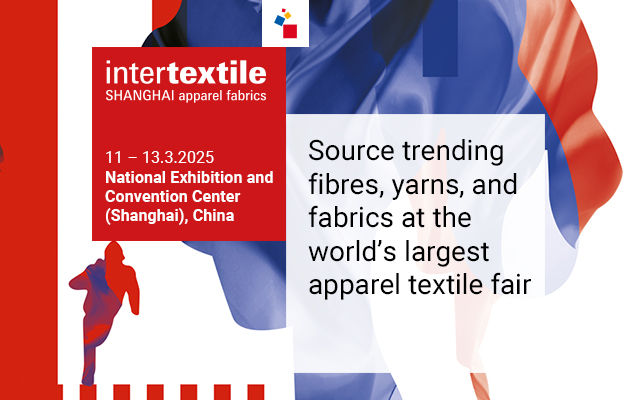The LYCRA Company is a global leader in developing innovative fibre and technology solutions for the apparel and personal care industries. Headquartered in Wilmington, Delaware, it is renowned for its cutting-edge products, technical expertise, sustainable practices, and strong marketing support. With a legacy dating back to 1958, when it invented LYCRA® fibre, the company continues to innovate with brands like LYCRA®, COOLMAX®, and THERMOLITE®. Committed to sustainability, The LYCRA Company collaborates with partners like Qore® to develop bio-derived fibres, contributing to reduced environmental impact and enhancing product performance. COMMERCIAL DIRECTOR SOUTH ASIA AND EMEA DISTRIBUTION Fabrizio Maggi, discusses bio-derived LYCRA® fibre made with QIRA® and sustainability.

1. What are the most significant challenges the textile and apparel industry face in adopting sustainable materials on a larger scale?
There are several factors that need to be considered as the industry looks to adopt more sustainable options. One is cost, as frequently, sustainable fibres and technologies are more expensive to produce; another is the availability of sustainable materials at scale; and finally, ensuring that suppliers of sustainable materials have the data to allow for truthful and accurate claims.
2. What steps do you believe manufacturers and brands need to take to ensure that sustainability becomes a core part of their business strategies?
To make sustainability a core part of their business strategies, manufacturers and brands need to:
Prioritise the use of sustainable raw materials backed by certifications in order to ensure transparency throughout the supply chain
Design products for longevity and end-of-life with a recycling solution
Reduce environmental impact by minimising their own energy and water usage, reducing waste, and adopting sustainable processes.
3. What impact do you think shifting consumer awareness around sustainability will have on the future of the textile and apparel market?
As consumer awareness of sustainability grows, it will have a profound impact on the textile and apparel market. Consumers are increasingly seeking products that are not only high-quality but also environmentally responsible. This shift is driving brands to adopt more sustainable materials and processes to stay competitive.
Brands that can demonstrate transparency in their supply chains and offer verifiable sustainability claims will likely see increased loyalty from eco-conscious consumers. The LYCRA Company’s focus on bio-derived LYCRA® fibre made with QIRA®, for example, appeals to brands and retailers that want to align with consumer demand for sustainable products without sacrificing performance.
Furthermore, as sustainability becomes a central purchasing criterion, brands that fail to adapt may struggle to retain market share. This growing consumer pressure is expected to accelerate the adoption of sustainable practices across the industry, reshaping the future of fashion and apparel.
4. Could you elaborate on the significance of the collaboration between The LYCRA Company and Qore® for developing bio-derived LYCRA® fibre with QIRA®? What inspired this partnership?
The collaboration between The LYCRA Company and Qore® aims to develop the world’s first large-scale bio-derived LYCRA® fibre using QIRA®, a bio-derived 1,4-butanediol (BDO) made from renewable corn feedstock. This partnership is transformative because it enables a shift from fossil-based to renewable ingredients. The LYCRA Company recognised that raw materials were a major contributor to our carbon footprint and sought to innovate with QIRA®, supporting both our and our customers’ sustainability goals to lower our environmental impact.
5. How does QIRA® contribute to the reduction of the carbon footprint in LYCRA® fibre production? Can you share specific metrics on the environmental impact?
According to the results of our Screening Life Cycle Assessment (LCA)*, using QIRA® has the potential to decrease the carbon footprint of LYCRA® fibre by up to 44 per cent vs. traditional LYCRA® fibre made from fossil-based inputs. The Screening LCA covers cradle-to-gate, including raw materials extraction/cultivation and processing, upstream transportation and fibre production at a LYCRA® fibre facility in Asia.
Our plan is to commission a more detailed LCA once fibre production is underway; therefore, we will provide specifics once we have actual production data.
6. With the first renewable LYCRA® fibre made from QIRA® expected to be commercially available in 2025, what has been the biggest challenge in scaling this bio-derived fibre for the market?
The biggest challenge in scaling bio-derived LYCRA® fibre made with QIRA® has been the time required in the development and construction of the necessary infrastructure to produce QIRA® at scale. Qore®, the maker of QIRA®, has its facility in Eddyville, Iowa, and is expected to be operational in the first quarter of 2025.
7. How do the performance characteristics of bio-derived LYCRA® fibre made with QIRA® compare to traditional fossil-based LYCRA® fibre? Are there any key differences in quality or performance?
Bio-derived LYCRA® fibre made with QIRA® is expected to deliver equivalent performance to traditional fossil-based LYCRA® fibre in terms of stretch, strength, and durability. The chemical structure of the bio-derived BDO, once converted into PTMEG, is the same as the fossil-based version, ensuring that the fibre retains the same high-quality performance that brands and consumers have come to expect from The LYCRA Company.
8. Can you explain the significance of using renewable corn feedstock for QIRA® and how this fits into The LYCRA Company’s broader sustainability goals?
By using dent corn as feedstock, we can replace a finite resource (petroleum), which is traditionally used to make LYCRA® fibre, with QIRA®. So, we can conserve finite resources and reduce our greenhouse gas emissions. This aligns with our broader sustainability goal to lower our carbon footprint and reduce our reliance on fossil fuels.
9. How will QIRA® production and bio-derived LYCRA® fibre affect the supply chain for brands and retailers? Are there any shifts in fabric production processes that partners should be aware of?
The introduction of bio-derived LYCRA® fibre made with QIRA® will not require any changes to the supply chain for brands and retailers. Since the performance characteristics of bio-derived LYCRA® is equivalent to traditional LYCRA® fibre, no re-engineering of fabrics, patterns, or production processes will be necessary. This means that brands can adopt this more sustainable material without disrupting their existing operations.
10. What role does consumer demand for sustainability play in The LYCRA Company’s decision to develop bio-derived products like LYCRA® fibre with QIRA®?
The key impetus has been the industry’s need to reduce its impact to meet the aims of the Paris Agreement. Consumer demand for sustainability has subsequently played a crucial role in The LYCRA Company’s decision to develop bio-derived products. As consumers become more aware of the environmental impacts of fast fashion, they are increasingly looking for high-quality, long-lasting garments made from sustainable materials.
11. Could you share any insights on the feedback or interest you’ve received from brands and retailers regarding the upcoming bio-derived LYCRA® fibre?
The feedback from brands and retailers has been overwhelmingly positive. Leading global brands have expressed strong interest and commitment to adopting bio-derived LYCRA® fibre made with QIRA®, as they look towards their strategic suppliers to help them meet their own sustainability goals. Select brands have visited the Iowa plant where QIRA® will be produced and have met with the local farmers. Through these visits, we have showcased the transparency and traceability of the feedstock, starting with the farmers and the growing process for corn.
12. How does The LYCRA Company ensure that bio-derived products such as those using QIRA® still maintain the same durability and longevity for which LYCRA® is known?
Bio-derived LYCRA® fibre made with QIRA® retains the same product performance by maintaining an identical chemical structure to that of traditional LYCRA® fibre. Once QIRA® is converted into PTMEG, the fibre performs just like its fossil-based counterpart, ensuring the same level of stretch, strength, and shape retention.
13. Can you discuss the future of bio-derived fibres in the textile industry and where The LYCRA Company sees its role in driving the adoption of more sustainable materials?
Bio-derived fibres are expected to play a significant role in the future of the textile industry as demand for sustainable materials continues to grow. The LYCRA Company views itself as a leader in this transition, helping the industry shift towards renewable materials. Bio-derived LYCRA® fibre made with QIRA® is a versatile and scalable solution that can be integrated across all fabric types and garments.
14. How do you see the role of bio-derived materials evolving in the next decade, and what technological innovations are driving this change?
Bio-derived materials are poised to play an increasingly important role in the textile and apparel industries over the next decade. Advances in material inputs, along with stricter environmental regulations and growing consumer demand for sustainable options, will further drive the adoption and evolution of bio-derived textiles. Innovations like bio-derived LYCRA® fibre made with QIRA® are paving the way by offering a renewable alternative to fossil-based fibres.
15. Finally, how can the industry balance the need for sustainability with the demand for high-performance fabrics and materials that consumers have come to expect?
The industry can balance sustainability with performance by adopting sustainable fibres that maintain the same quality standards as traditional materials. For example, bio-derived LYCRA® fibre made with QIRA® offers the same stretch, strength, and durability as fossil-based LYCRA® fibre, ensuring there is no compromise on performance.
Additionally, innovations like LYCRA® XTRA LIFE™ fibre focus on enhancing durability, which extends the lifespan of garments and reduces the need for frequent replacements. By making sustainability synonymous with durability and high performance, brands can meet consumer expectations while minimising environmental impact.











Comments